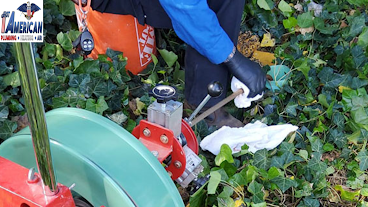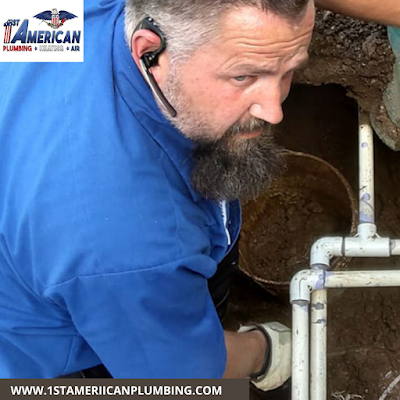9 Leading Causes for Clogged Drains
One of the most common reasons people call a plumber is a clogged drain. Toilets, sinks, showers, and bathtubs each have the potential to clog, and when you see water rising instead of draining, you may begin to panic. Clogs can cause bigger problems such as flooding, corrosion, and sewer line backups, none of which is welcome in your home. So, what causes drains to clog? Lots of things. We’ve put together this list of the 9 leading causes for clogged drains to help you better understand why clogs happen and what to do if they happen to you in your home.
1.
Hair
Hair clogs are very common in homes. Everyone
has hair, and that hair needs to be either washed or shaved, and the daily
showering or shaving means hair is being rinsed down the drain. Those small
bits of hair flushing down the drain may seem minor at the time, but the
accumulation of hair builds up and disgusting clogs form. Over time, that
clogged drain will lead to slow to drain or standing water.
To avoid these clogs, take precautionary
measures and reduce the amount of hair that enters the drain in the first
place. You can find a drain cover at most home improvement stores to place over
your bathtub or shower drain to catch the hair. This one small addition can
drastically help reduce the chances of hair clogging and eliminate the need for
drain cleaning.
2.
Soap
Believe it or not, most soaps are made by mixing
animal fat with lye. Bar soap needs this hydrogenated fat to be turned into a
solid, bar form. When the fat mixes with water minerals, it forms soap scum,
and this soap scum can cause a clogged drain. If you notice that your soap bar
is leaving large amounts of soap scum in your bathtub or shower, consider using
liquid soap, which contains no animal fat.
3.
Mineral Buildup
If you have hard water, it can cause the
minerals in the water to build up along the walls of the pipes in your home.
The dissolved magnesium and calcium in water hardens as it sits in your pipes,
reducing the outlet in the pipe. Hydro jetting is a form of drain cleaning that
works well in clearing mineral deposits and other blockages. Another option to
resolve this issue is to install a water softener in your home.
4.
Grease
Similar to hair, grease doesn’t cause a
clogged drain immediately. This makes it easy to be careless when you are
cleaning up after cooking and let the grease go down the drain. Fatty oil
residue collects on the sides of kitchen pipes, and it’s only a matter of time
until the pipes can no longer allow liquids to drain.
Here in Salt Lake City, temperatures can get
quite cold, and this will cause those greasy oils to thicken and block pipes
much easier, so it’s best just to avoid washing grease down your kitchen sink
at all. Drain cleaning by a qualified plumber can help clear these difficult
grease clogs.
5.
Food Scraps
We mentioned above that grease can cause your
pipes to clog, but it’s important for us to note that certain food scraps can
also cause clogged drains in your home. Starchy foods such as potatoes, pasta,
and rice can quickly plug your pipes, and so can fibrous fruits and vegetables.
These items should be placed in a garbage can.
The truth is most household garbage disposals
can only handle small amounts of food scraps. You should never put coffee
grounds or eggshells in your garbage disposal, either. Consider taking these
food scraps and composting them.
6.
Roots
If you have trees or bushes planted around
your home, especially if they’re older, the root systems from these plantings
can easily penetrate through the ground and block pipes. Unlike hair or grease,
this blockage isn’t as easy to see with the naked eye. Your local Salt Lake
City plumber can run a camera through your pipes to help identify if roots are
causing your pipes to clog.
7.
Toiletries
If you’ve noticed your toilet having flushing
and draining issues, you could have a sewer pipe clog. It’s common these days
for people to flush feminine hygiene products, sanitary products, and baby
wipes. Most of the products shouldn’t be flushed and will cause drain
blockages, because each of these products double in size when they absorb
water.
The good news is your friendly Salt Lake City
plumber can help you with sewer line cleaning to remove these products. It’s
important to state that if you have flushed these products before, you never
should put them down the drain again. Dispose of these toiletries in the
garbage.
8.
Foreign Objects
If you have children, you know that it’s
common to find kids toys everywhere throughout your home—and this can include
drains. Small toys can easily fit down bathtub drains, and some not-so-small
toys can even be flushed down the toilet. These objects can create an obstruction
in the drain and lead to serious clogs.
To prevent this happening in bathtubs and
sinks, install a drain cover to catch these items quickly. If a toy is stuck in
the toilet drain, call your local plumber to inspect where the object got
stuck—they can perform sewer line cleaning if needed.
9.
Heavy Rain
Here in Utah, we can have heavy rain that
falls during a thunderstorm. These heavy rains can easily cause drain blockages
by bringing foreign objects into the drain system. Leaves, debris, any of these
objects can build up in the sewer line and can cause clogs in the system. If
it’s raining and you notice dirty water coming up into your sink or shower,
contact your local plumber immediately.
Remember that it’s essential to keep your drains clear
and in good working condition to prevent Drain Clogs in Salt Lake City.
If you’re experiencing a drain clog and you need drain cleaning help, reach out
to our trusted plumbers at 1st American Plumbing,
Heating & Air for expert assistance. Our trustworthy
plumbers are here to help you with all of your plumbing problems.
The
Article “9 Leading Causes for Clogged Drains?” Originally Post On HERE




Comments
Post a Comment